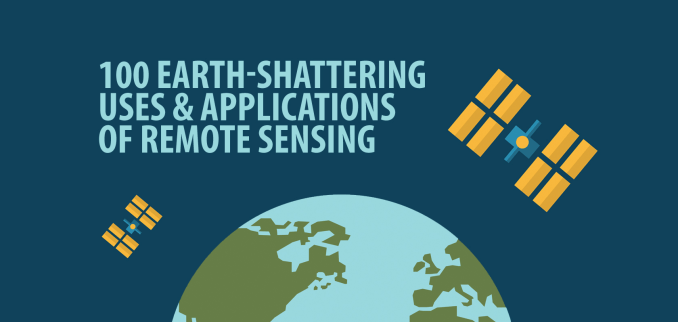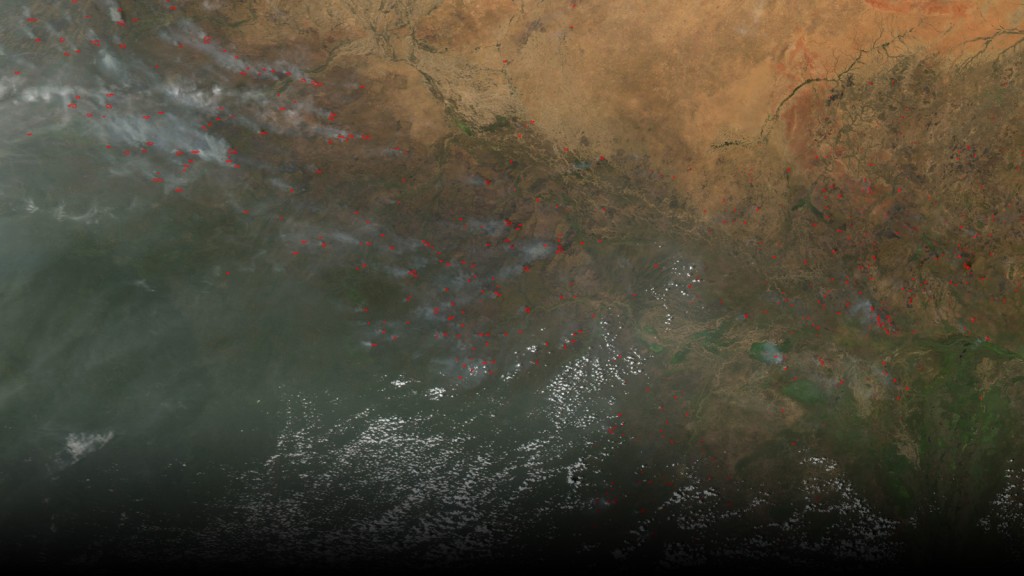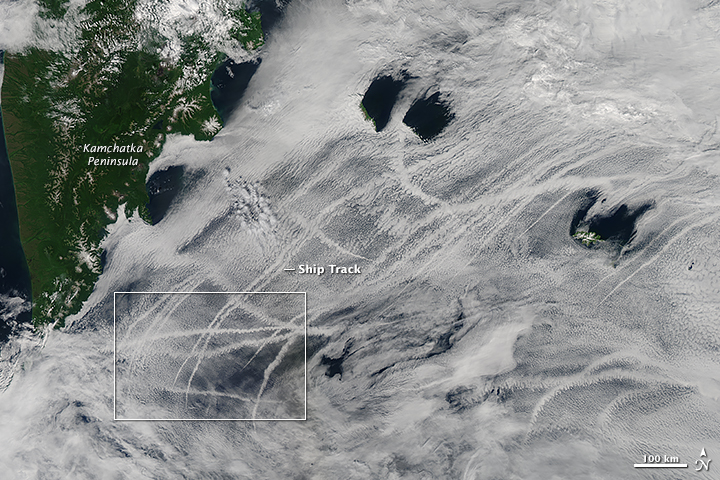
Image from GIS Geography. 100 Earth Shattering Uses and Applications of Remote Sensing.
GIS Geography published a list of 100 uses and applications of remote sensing, where data from NASA’s Terra satellite appeared in over 10%.
Listed below are some examples of Terra data uses that made the list (numbered by their original order in the article from GIS Geography):
13. Identifying forest stands and tallying their area to estimate forest supplies (MODIS)
26. Fighting wildfires by planning firefighter dispatch (MODIS)
27. Monitoring air quality in the lower atmosphere (MOPITT)
38. Keeping tabs on the shift from rural to urban growth (MODIS)
39. Quantifying crop conditions with Normalized Difference Vegetation Index (NDVI from MODIS)
59. Monitoring active volcanoes using thermal remote sensing (ASTER, MISR, and MODIS)
66. Looking at the Earth as an art masterpiece NASA’s Earth as Art | NASA Visible Earth
70. Comparing climatic factors from past to present (MODIS, CERES, MOPITT)
75. Studying geology of the Earth’s surface (ASTER, MISR, MODIS)
77. Measuring albedo for Earth’s radiation budget (CERES)
83. Delineating watersheds using DEMs for hydrologists (ASTER)
85. Using a least-cost analysis and vegetation to understand wildebeest migration (NDVI from MODIS)
Read the whole list and learn more about each of the uses and applications of remote sensing at 100 Earth Shattering Remote Sensing Applications Uses from GIS Geography



